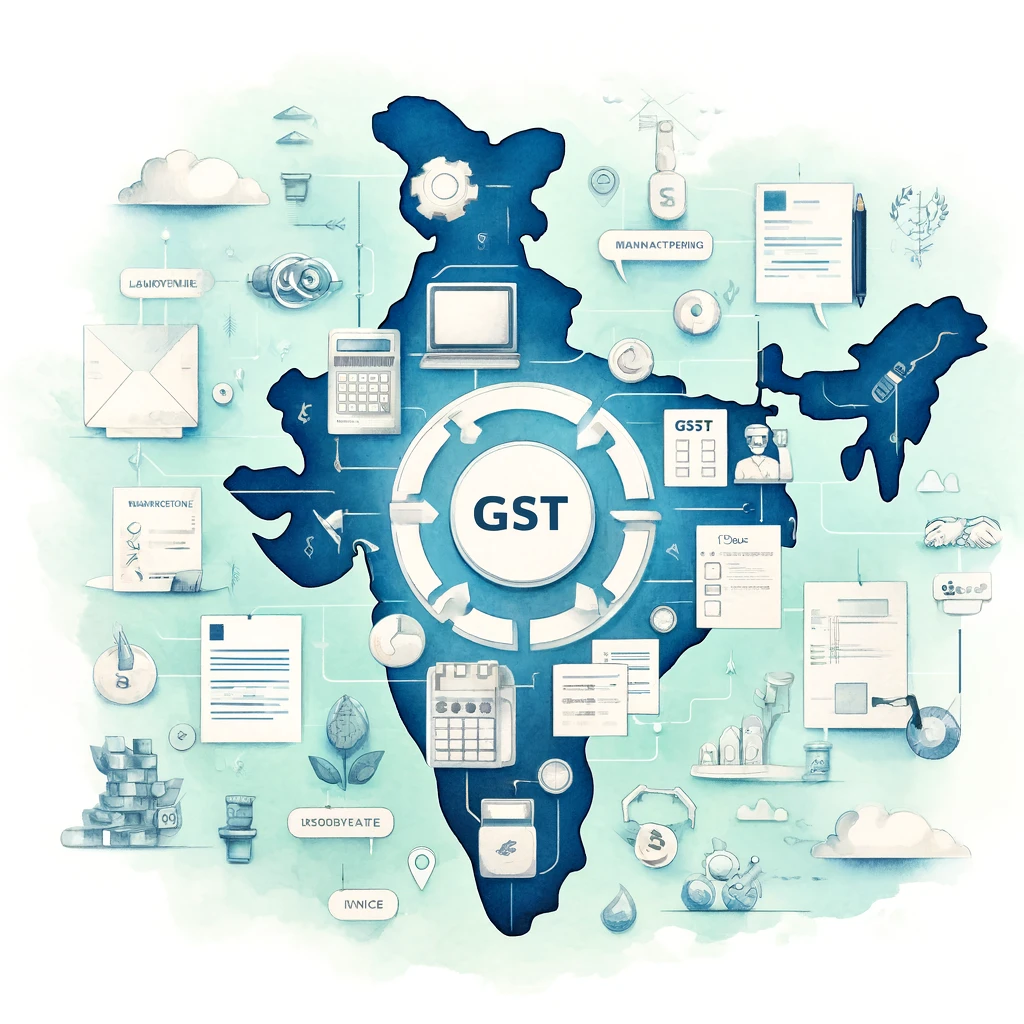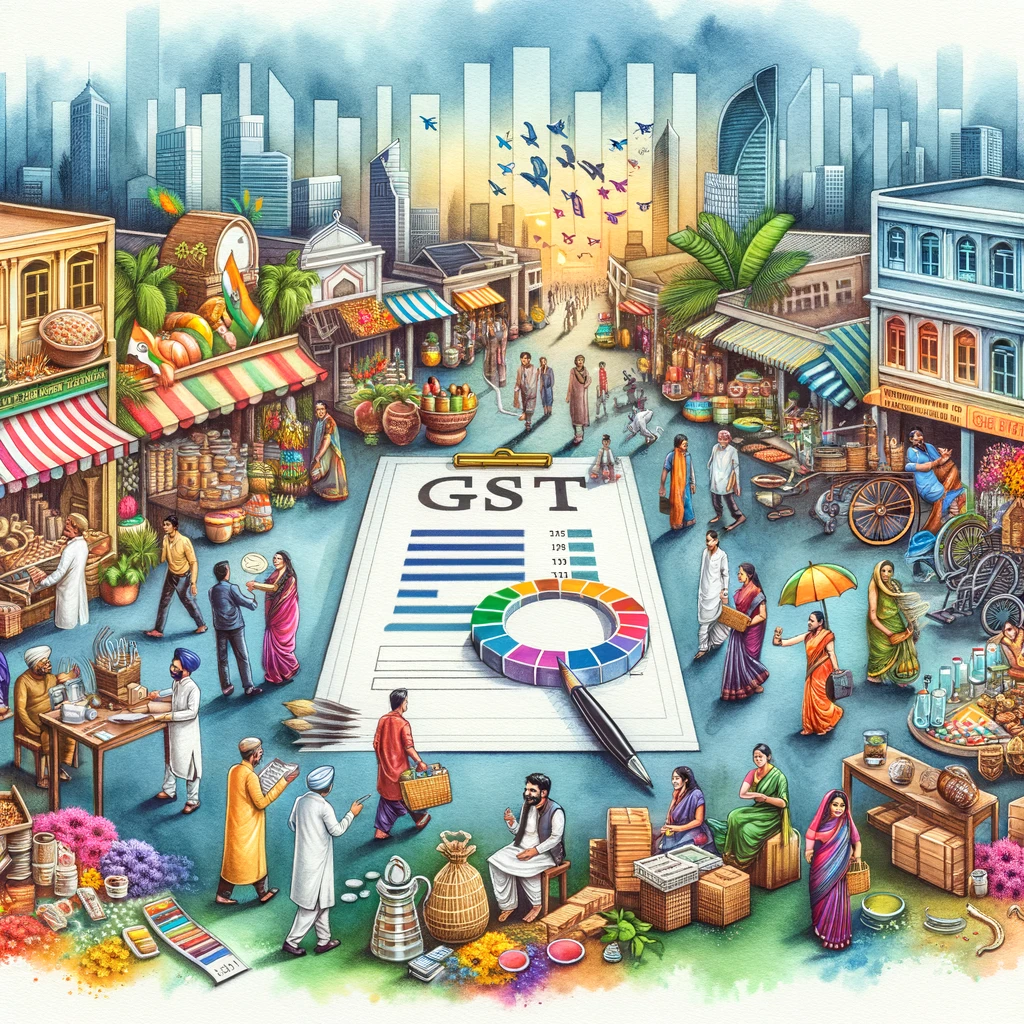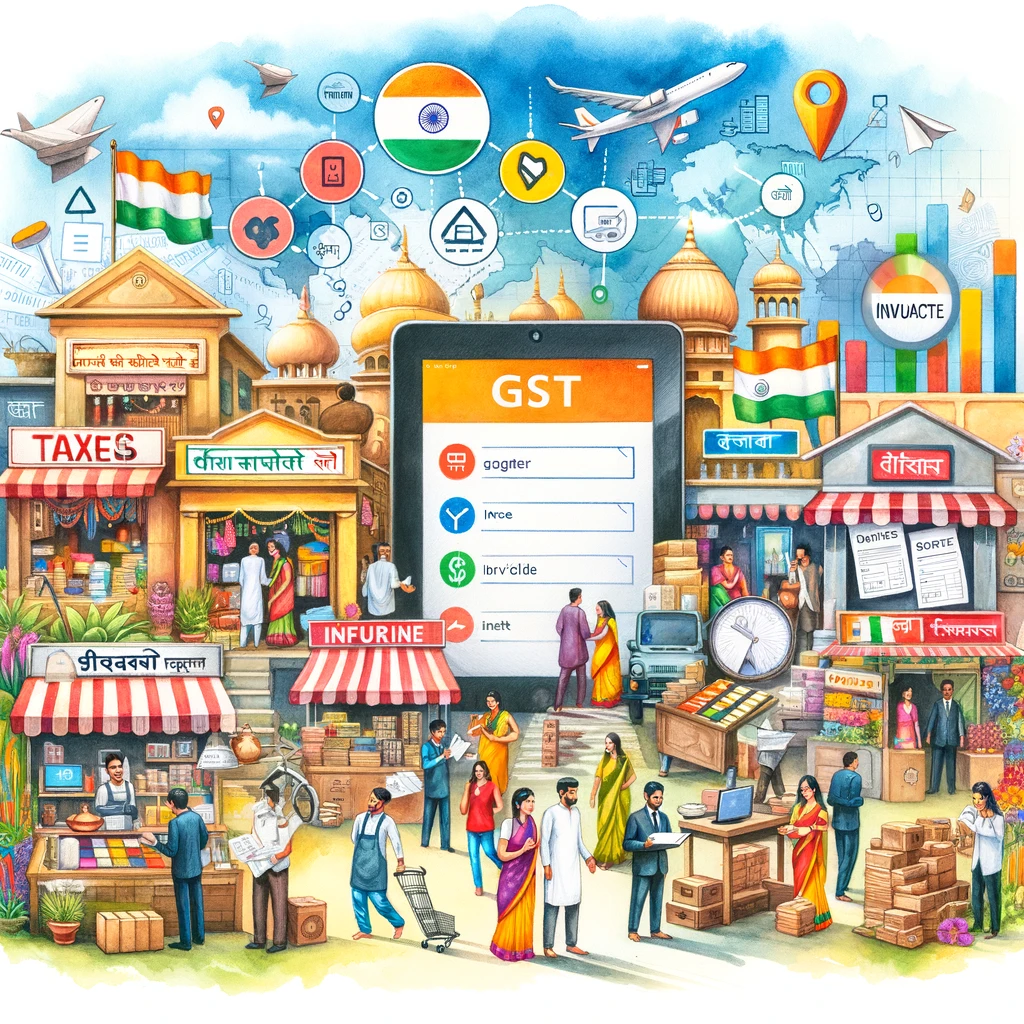The Goods and Services Tax (GST) reform, introduced on July 1, 2017, is one of the most significant tax reforms in India’s history. It aims to unify the Indian market by replacing multiple indirect taxes levied by the central and state governments with a single comprehensive tax. GST is designed to simplify the tax structure, reduce the cascading effect of taxes, and boost economic growth.

Objectives of GST in India
- Unified Tax System: To replace a plethora of indirect taxes with a single, unified tax, making the tax system simpler and more transparent.
- Reduction of Cascading Effect: To eliminate the cascading effect of taxes (tax on tax), thereby reducing the overall tax burden on goods and services.
- Increase in Tax Compliance: To encourage higher compliance through a simpler tax regime and better tracking of transactions.
- Boost to GDP: To enhance economic growth by creating a common national market and improving the ease of doing business.
- Revenue Efficiency: To improve the efficiency of tax collections and increase the revenue for both the central and state governments.
Structure of Goods and Services Tax
GST is a destination-based, multi-stage tax levied on the supply of goods and services. It is structured into the following components:
- Central GST (CGST): Collected by the central government on intra-state sales.
- State GST (SGST): Collected by state governments on intra-state sales.
- Integrated GST (IGST): Collected by the central government on inter-state sales and imports.
The GST Council, comprising representatives from the central and state governments, governs the GST structure, rates, and policies. It ensures a collaborative approach to decision-making.
Challenges of GST
- Technological Infrastructure: The GST Network (GSTN), the IT backbone for GST implementation, faced initial glitches, causing difficulties in filing returns and generating invoices.
- Transition for Businesses: Small and medium enterprises (SMEs) struggled with transitioning to the new system, requiring significant changes in accounting and billing processes.
- Complexity of Compliance: Frequent changes in rules, multiple return forms, and complex filing procedures led to confusion and compliance issues.
- Inter-State Coordination: Harmonizing tax rates and policies across states was challenging, given the diverse economic interests of different states.
Solutions Adopted For GST in India
- Improving GSTN: Continuous upgrades and improvements were made to the GSTN to handle high volumes of transactions and simplify the user interface.
- Simplification Measures: The government introduced measures like quarterly return filing for small taxpayers, composition schemes, and simplification of forms to ease compliance.
- Capacity Building: Extensive training and awareness programs were conducted for businesses and tax officials to facilitate a smoother transition.
- Policy Adjustments: The GST Council held regular meetings to address issues, make necessary adjustments in tax rates, and clarify rules to ensure smoother implementation.

Impact on Businesses, Consumers, and Economy
Businesses
- Reduction in Compliance Costs: With a unified tax system, businesses no longer need to navigate multiple tax authorities, reducing compliance costs and administrative burdens.
- Input Tax Credit: The availability of input tax credit across the supply chain has reduced the tax burden on businesses, enhancing profitability and competitiveness.
- Ease of Doing Business: Simplified tax structure and reduced logistics costs have improved the ease of doing business in India.
Consumers
- Price Stability: The elimination of the cascading effect of taxes has led to more stable prices for goods and services.
- Transparency: Consumers benefit from greater transparency in the pricing of goods and services, as GST is indicated on invoices.
Economy
- GDP Growth: The creation of a unified national market has boosted trade and commerce, contributing to economic growth.
- Revenue Generation: GST has broadened the tax base, leading to higher revenue collection for both central and state governments.
- Formalization of the Economy: The introduction of GST has led to greater formalization of the economy, as businesses are incentivized to operate within the tax net to claim input tax credits.

Way Forward
- Digital Integration: Continued improvements in the GSTN and integration with other digital initiatives like e-invoicing and e-way bills will further streamline compliance and reduce tax evasion.
- Increased Compliance: Ongoing efforts to simplify the GST framework and educate taxpayers will likely lead to higher compliance rates.
- Economic Boost: As the system stabilizes and matures, the positive impact on trade, investment, and economic growth is expected to deepen.
Potential Areas for Improvement
- Rate Rationalization: Simplifying the GST rate structure by reducing the number of tax slabs and rationalizing rates can reduce complexity and improve compliance.
- Compliance Simplification: Further simplification of return filing processes and procedures, especially for small taxpayers, can enhance ease of compliance.
- Addressing Sector-Specific Issues: Tailored solutions to address specific challenges faced by sectors like real estate, petroleum, and alcohol (currently outside GST) can enhance the effectiveness of GST.
- Strengthening Enforcement: Strengthening the enforcement mechanisms to prevent tax evasion and fraud while ensuring taxpayer-friendly policies can balance compliance and ease of doing business.
Conclusion
The GST reform is a landmark achievement in India’s tax history, aimed at creating a more efficient, transparent, and unified tax system. Despite initial challenges, GST has positively impacted businesses, consumers, and the economy, contributing to higher compliance and revenue generation. As the system evolves, continued efforts to simplify and rationalize the tax structure, coupled with robust technological integration, will further enhance its effectiveness and foster sustained economic growth.


